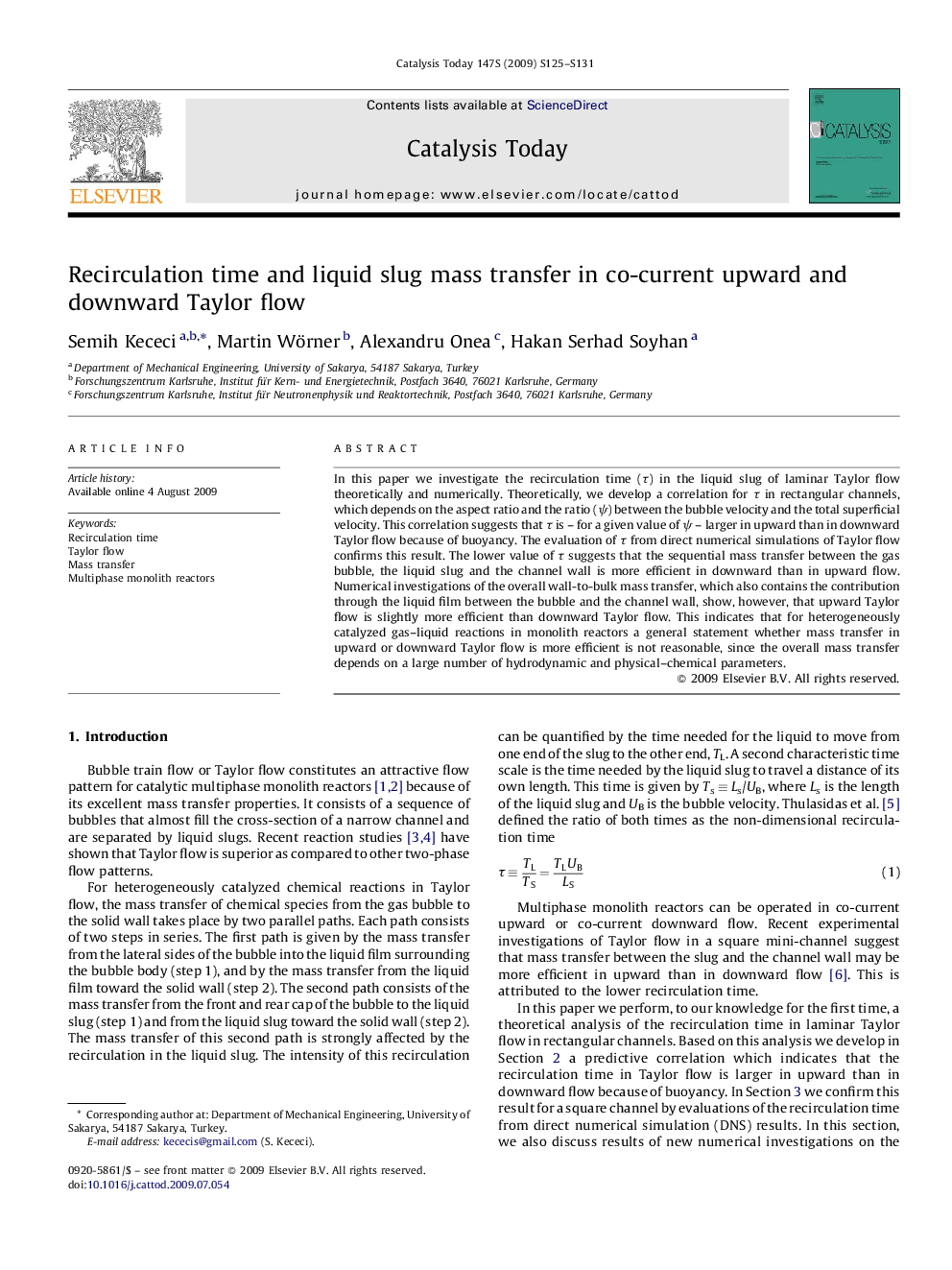| Article ID | Journal | Published Year | Pages | File Type |
|---|---|---|---|---|
| 57082 | Catalysis Today | 2009 | 7 Pages |
In this paper we investigate the recirculation time (τ) in the liquid slug of laminar Taylor flow theoretically and numerically. Theoretically, we develop a correlation for τ in rectangular channels, which depends on the aspect ratio and the ratio (ψ) between the bubble velocity and the total superficial velocity. This correlation suggests that τ is – for a given value of ψ – larger in upward than in downward Taylor flow because of buoyancy. The evaluation of τ from direct numerical simulations of Taylor flow confirms this result. The lower value of τ suggests that the sequential mass transfer between the gas bubble, the liquid slug and the channel wall is more efficient in downward than in upward flow. Numerical investigations of the overall wall-to-bulk mass transfer, which also contains the contribution through the liquid film between the bubble and the channel wall, show, however, that upward Taylor flow is slightly more efficient than downward Taylor flow. This indicates that for heterogeneously catalyzed gas–liquid reactions in monolith reactors a general statement whether mass transfer in upward or downward Taylor flow is more efficient is not reasonable, since the overall mass transfer depends on a large number of hydrodynamic and physical–chemical parameters.
